Do Petunias Self-Seed in the UK? A Friendly Guide to Garden Surprises
Petunias can add a vibrant splash of color to your garden, making them a popular choice for many gardeners in the UK. You might be wondering if these beautiful flowers can save you some effort by reseeding themselves. The good news is that petunias can indeed self-seed under the right conditions.
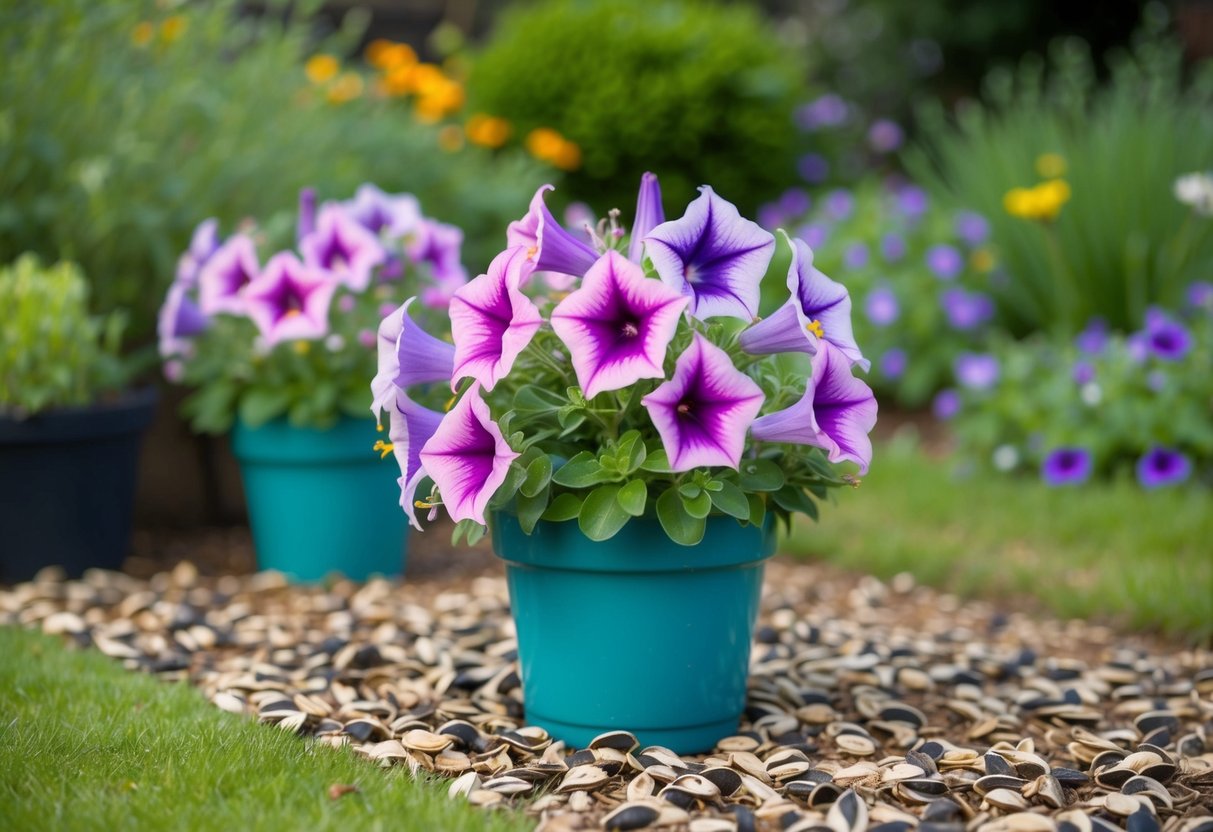
To encourage your petunias to self-seed, it’s helpful to let some of the flowers naturally wither and form seed pods. By allowing these pods to mature and dry out, you might find new seedlings emerging in the following season. It’s like a little gardening magic that brings life to your garden again without much extra effort.
Choosing the right variety, such as Wave petunias, can make the process more successful. These types are known for their ability to self-seed more easily. If you’re keen to add a touch of natural renewal to your garden, this method can be an exciting way to enjoy petunias year after year.
Understanding Petunias and Their Lifecycle
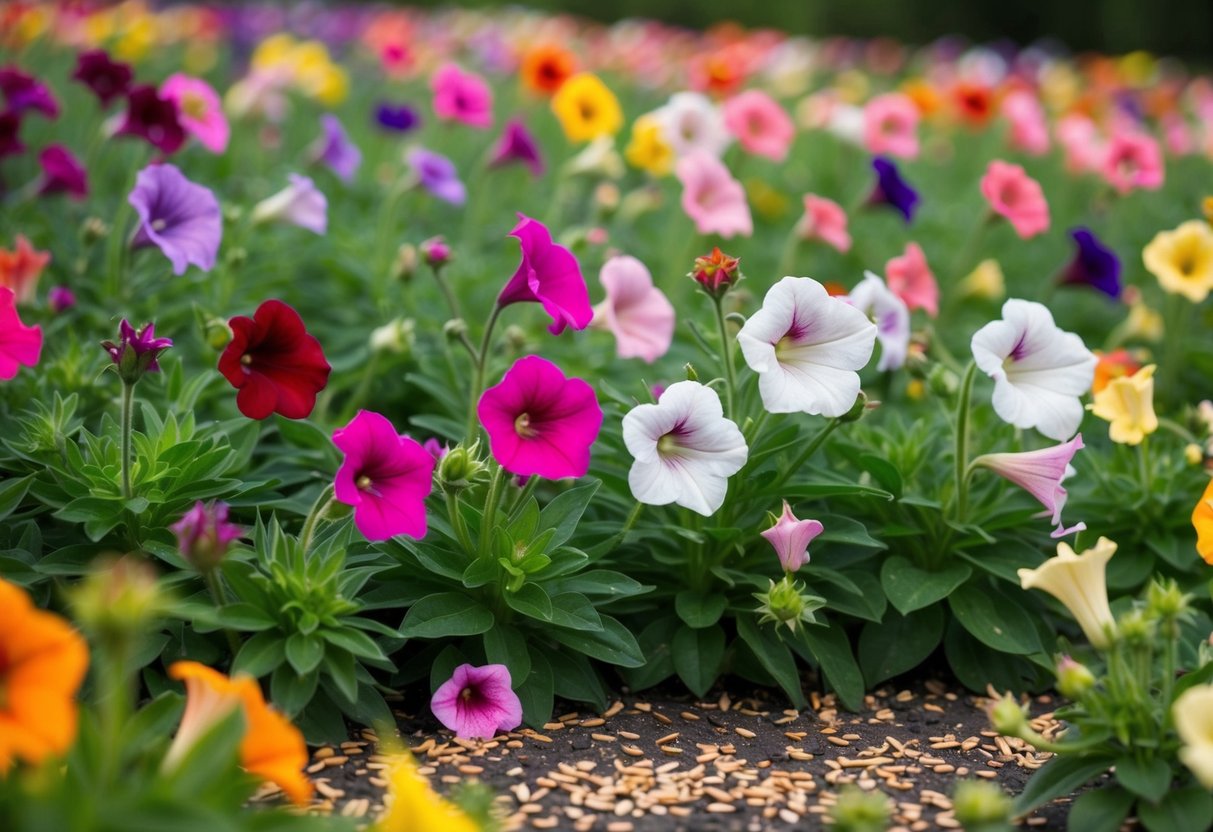
Petunias are delightful plants that add vibrant color to gardens. Originating from South America, they thrive in various climates, including the UK. They can be grown as annuals or perennials, depending on the climate.
When growing petunias, you can choose from several varieties. Petunia x hybrida is a popular type, offering a range of sizes and colors. Grandiflora petunias have large blooms, while multiflora petunias boast smaller, more abundant flowers. Wave petunias are well-known for their spreading growth habit.
If you want to grow petunias from seed, it takes patience. Seeds take about 5 to 15 days to germinate under the right conditions. Keeping the seeds warm and moist is key to success.
Many gardeners love petunias because some types can self-seed. After flowering, allow the blooms to die off naturally. This gives the plant a chance to produce seeds for the next season.
To ensure your petunias flourish, focus on planting them in well-draining soil. Adding compost or peat moss can boost soil quality. Regular pruning and removing spent flowers promote more blooms and keep the plant healthy.
In the UK, petunias can be a rewarding choice for those who want bright, beautiful blooms throughout the growing season. Try different varieties, experiment with growing methods, and enjoy the beauty of these versatile plants in your garden.
The Basics of Growing Petunias in the UK

Growing petunias in the UK involves considering the climate, choosing the right varieties, and preparing the soil for planting. Petunias thrive in moist, well-drained soil and need plenty of sunlight.
Climate and Best Planting Times
In the UK, petunias should be planted after the last frost to ensure they thrive. The typical planting season is between May and June. Petunias prefer areas with plenty of sunlight, so select a spot in your garden that gets good exposure to the sun.
If you start with seeds indoors, keep them at a steady temperature of 18-24°C. This warmth encourages sprouting. Once the seedlings have grown enough, and frost risks are gone, you can move them outdoors. Always monitor the weather forecasts to avoid any unexpected frosts that could damage young plants.
Choosing the Right Petunia Varieties
Select petunia varieties that suit your personal style and garden conditions. Options like Wave petunias, Million Bells, or Supertunias are known for their vigorous growth and vibrant colors.
These varieties are also more likely to self-seed, which means less ongoing maintenance. Petunias come in trailing, spreading, or upright forms. Select according to whether you want them hanging in baskets, covering a flower bed, or adding height to a garden border. Pay attention to the size of the flowers. Some varieties have large, showy blooms, while others are smaller and more subtle.
Preparing for Planting
Before planting, prepare the soil by mixing in compost or balanced fertilizer. This improves drainage and delivers essential nutrients. If your soil is clay-heavy or sandy, adding organic matter can help maintain moisture and prevent waterlogging.
Ensure the soil remains moist but not soggy. Once you’re ready to plant, space each petunia about 30cm apart. This gives them room to grow and promotes healthy air circulation. In hanging baskets or pots, consider planting three or four plants per 30cm radius.
Regular watering is key, especially in dry spells. Petunias need consistent moisture to thrive. Don’t forget to deadhead dying flowers to encourage new blooms and potentially increase the chances of self-seeding in your garden.
From Seeds to Blooms
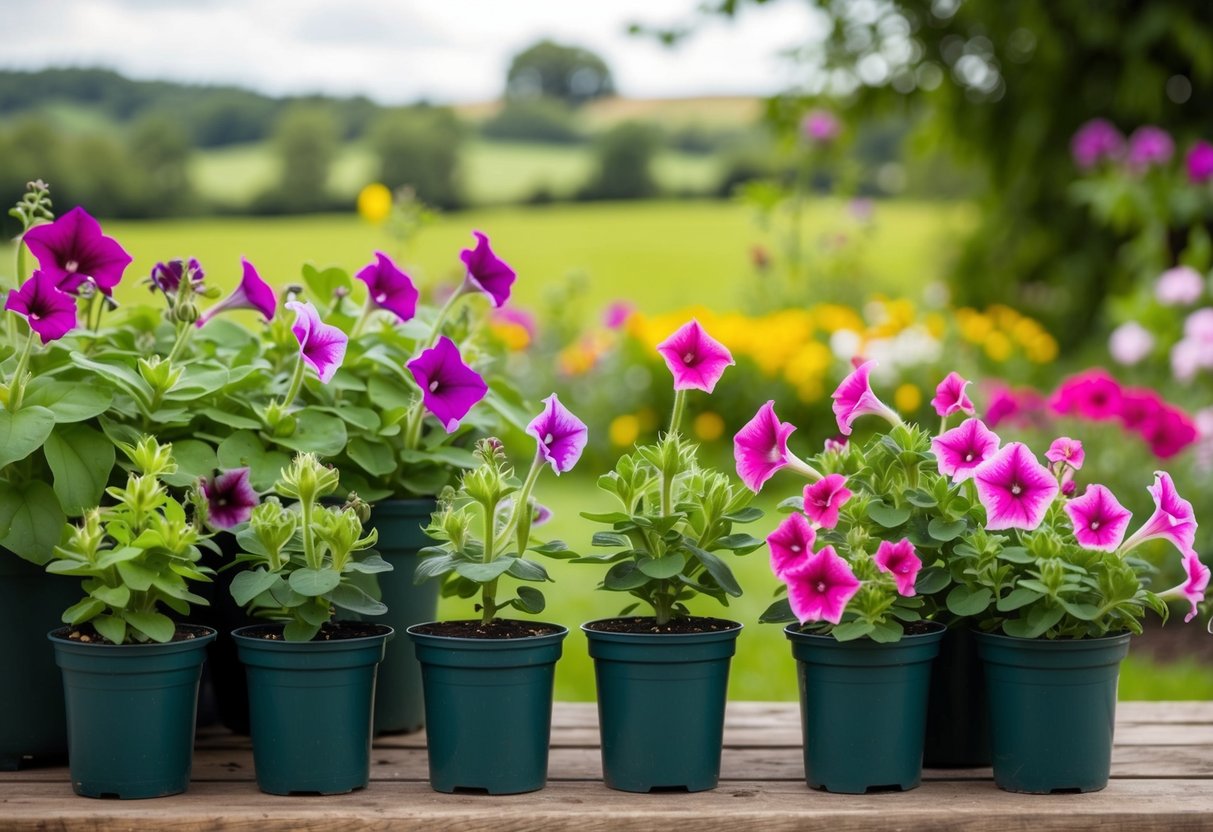
Growing petunias from seed to full bloom can be a rewarding journey. It’s important to focus on proper sowing techniques and providing the right care to young plants for vibrant blooms.
Sowing and Germination Tips
Begin by choosing a quality seed tray and ensure it has good drainage. Use a mix of light compost and a bit of potting compost. Gently press the seeds onto the surface without covering them, as they need light to germinate.
Maintain a consistent level of moisture, but avoid overwatering. A clear plastic cover can help retain humidity. Place the tray in a warm area with indirect sun, ideally around 18-24°C (64-75°F) for successful germination. Within seven to ten days, you should see tiny seedlings sprouting.
Caring for Young Petunia Plants
Once seedlings have developed three leaves, they are ready for transplanting. Prepare small pots with a mixture of potting compost, ensuring the soil is slightly acidic (pH 5.5-6.3). Transfer each seedling carefully to avoid damaging the delicate roots.
Keep the young plants in a sunny spot, but protect them from the harsh midday sun initially. Water them regularly, allowing the soil to dry slightly between waterings. Pinch off side shoots to encourage bushier growth, promoting more blooms later on. With these steps, your petunias will flourish.
Maintaining Healthy Petunias Throughout the Season
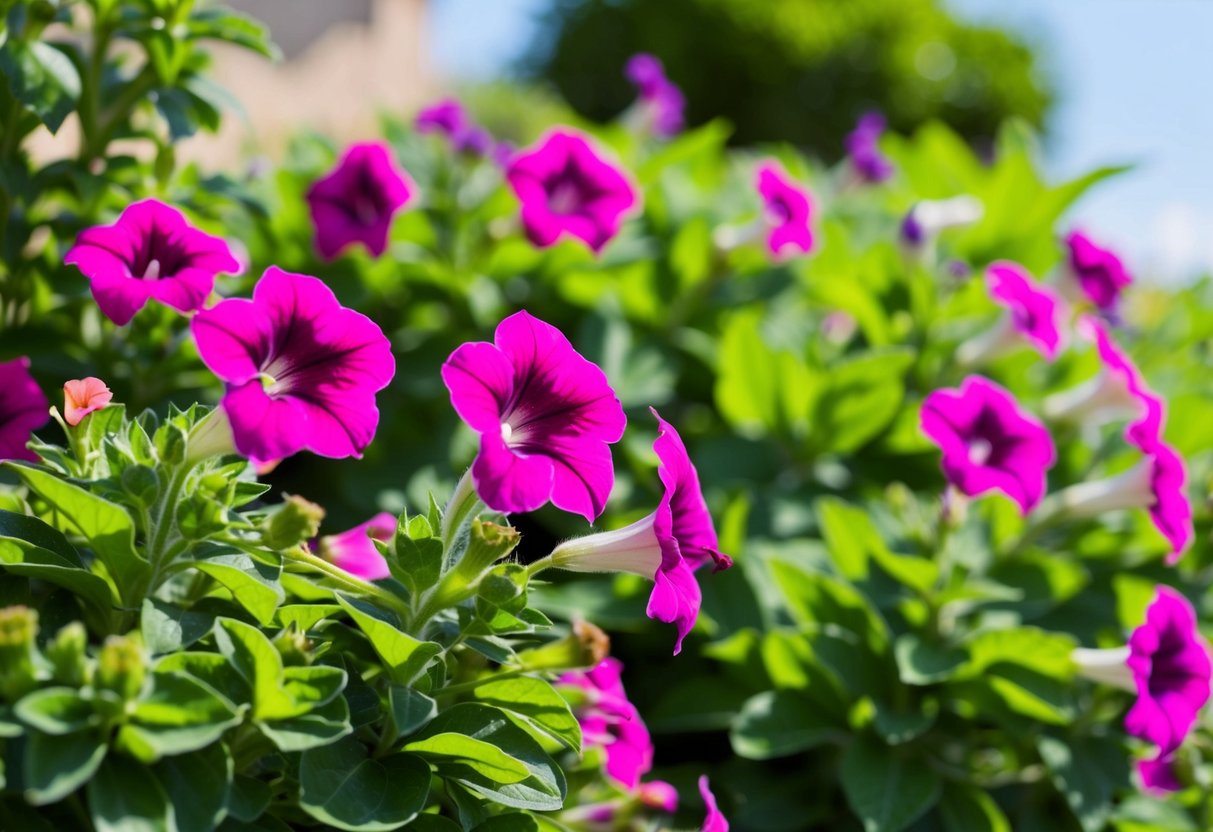
Keeping your petunias blooming and vibrant requires proper care. Focus on watering and fertilizing, managing pests and diseases, and deadheading and pruning. These tasks help ensure your petunias remain healthy and beautiful all season long.
Watering and Fertilizing
Petunias thrive with consistent moisture. Water them daily, especially in hot weather. Use a soaker hose or drip irrigation for even moisture distribution. Avoid overwatering, which can cause root rot.
Fertilize petunias every two weeks with a balanced liquid fertilizer. This encourages healthy growth and abundant blooms. When choosing a fertilizer, consider those labeled for blooming plants as they provide essential nutrients. Look for high phosphorus content, as it supports flower production.
Monitor soil moisture by checking the top inch of soil. If it feels dry, it’s time to water again. Adjust your watering routine based on rainfall, wind, and temperature conditions. Remember, consistent care can lead to stunning floral displays.
Dealing with Pests and Diseases
Petunias can attract pests like aphids, slugs, and snails. To tackle these, use natural solutions like neem oil or insecticidal soap. Introducing beneficial insects like ladybugs can help control aphid populations. Hand-picking slugs and snails off the plants is effective, especially in the early morning or after rain.
Prevent diseases like powdery mildew by ensuring proper air circulation around the plants. Space your petunias well and regularly remove any dead or crowded leaves. If mildew appears, use a fungicide specifically labeled for this disease to treat affected areas.
Keep an eye out for signs of pest infestation or disease. Acting quickly can prevent significant damage and keep your petunias thriving.
Deadheading and Pruning for Longer Blooms
To extend the blooming period, focus on regular deadheading. Remove spent blooms by pinching them off at the base. This not only encourages new flowers but also keeps the plants looking tidy.
Pruning is essential once petunias become leggy. Trim back about a third of the plant to encourage new, bushier growth. Use clean, sharp scissors to avoid damaging the plants.
These practices help maintain a lush appearance and continuous flowering. Set aside time each week to tend to your plants, ensuring they stay in top condition all season.
Encouraging Petunias to Self-seed
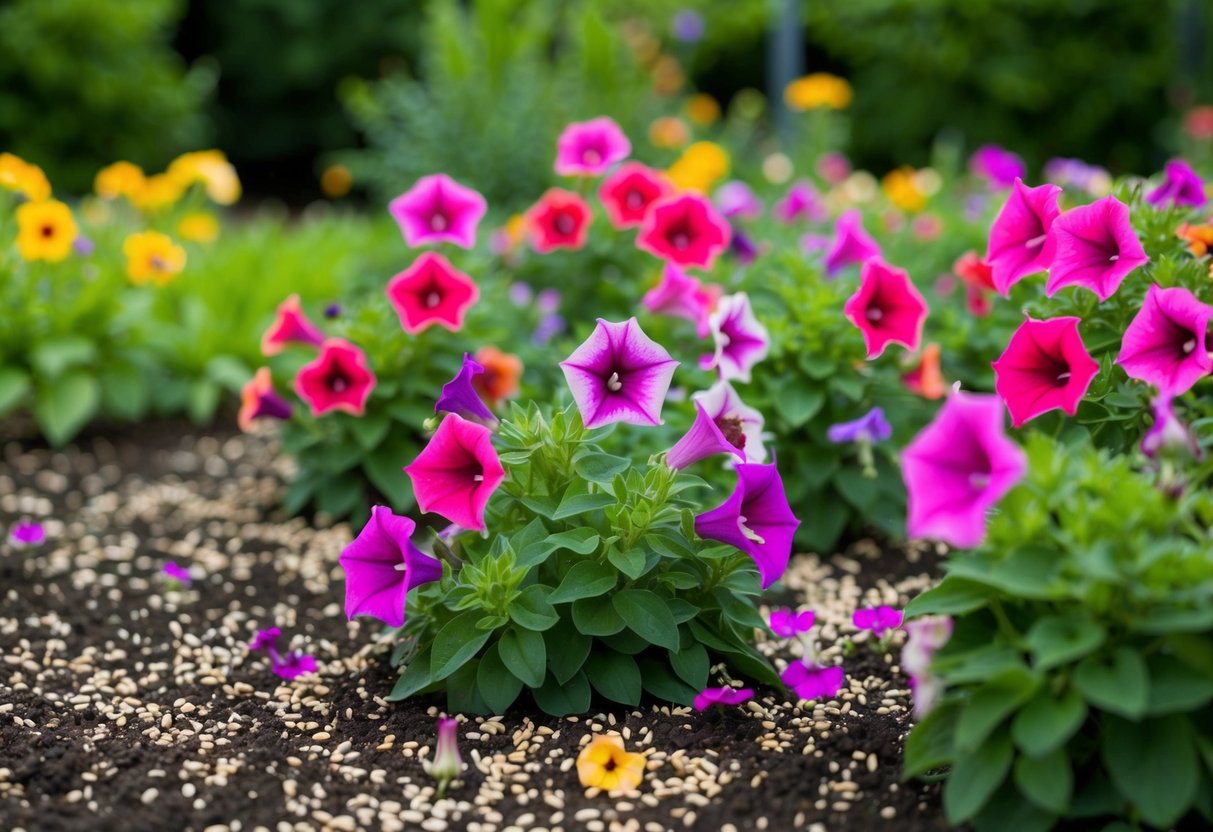
To help your petunias self-seed, allow the blooms to die naturally on the plant. As these flowers wilt, seeds start to form.
Wave petunias and Million Bells grow well in the UK and are known for self-seeding easily.
Leave some seedlings to grow naturally. Avoid deadheading the plants, as this removes the seeds before they can drop.
Steps to encourage self-seeding:
-
Choose a variety: Use petunias that are known to self-seed, like Supertunias.
-
Right location: Plant them in well-drained soil. This will help the seeds germinate and grow better.
-
Watch your garden: Keep an eye out for new seedlings that appear and let them grow into new plants.
When planting out, provide enough space. Crowded bedding plants might compete for resources. This reduces the chance of healthy self-seeding plants thriving.
Remember, petunias need light to germinate. Don’t bury the seeds too deep. Alighting them with the soil surface can improve germination rates.







